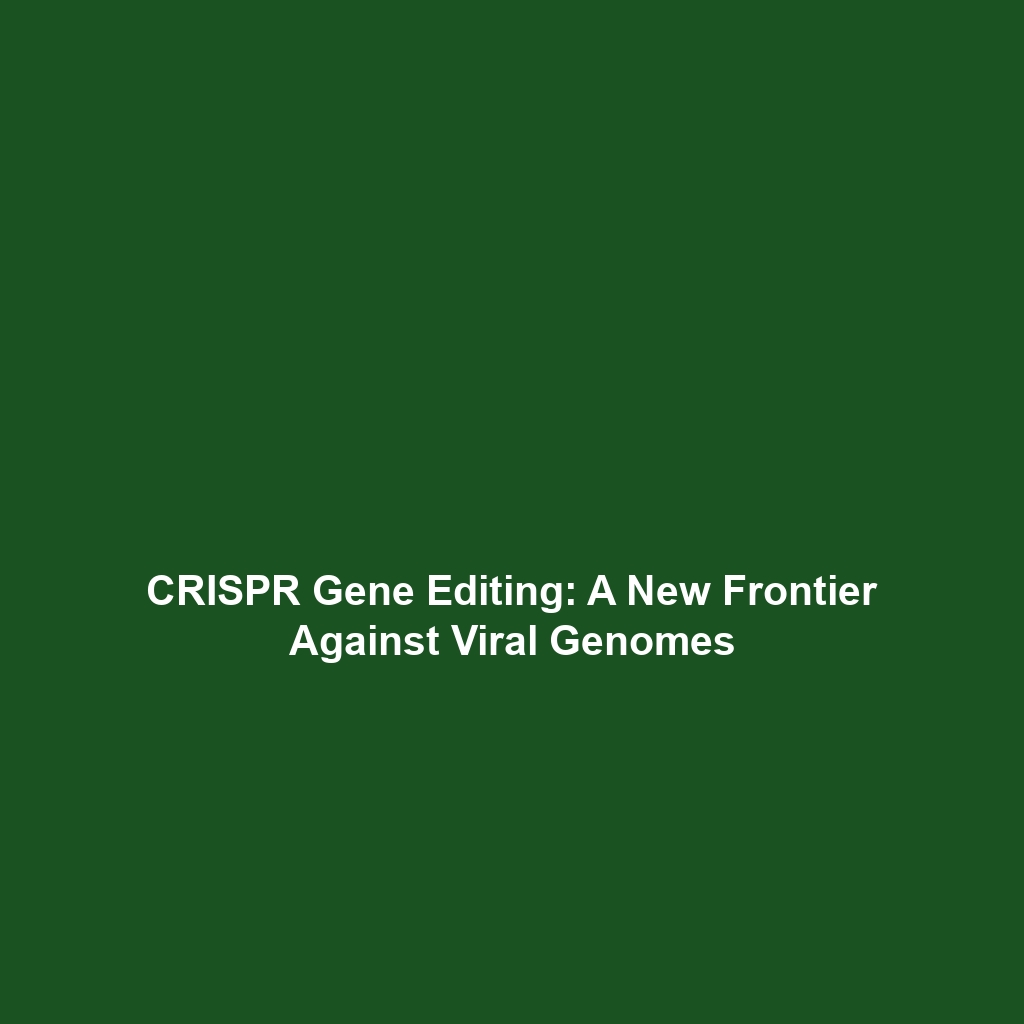CRISPR-Cpf1 (Cas12a) and Its Unique Properties
Introduction
CRISPR-Cpf1, also known as Cas12a, is an innovative and compelling component of the CRISPR gene editing toolbox. Distinguished by its unique properties, such as its ability to create staggered double-strand breaks, it opens new avenues in the field of CRISPR gene editing. The significance of CRISPR-Cpf1 lies in its precision and versatility, enabling more controlled modifications of the genome compared to its predecessor, Cas9. This article delves into the unique aspects of CRISPR-Cpf1, its applications, challenges, and future directions in gene editing.
Key Concepts
Understanding CRISPR-Cpf1 (Cas12a)
CRISPR-Cpf1 is a type of RNA-guided endonuclease, a molecular scissors that can target specific DNA sequences. Unlike Cas9, which creates blunt ends in DNA strands, CRISPR-Cpf1 generates staggered cuts, which can facilitate more efficient insertion of new genetic material. Major concepts related to CRISPR-Cpf1 and its unique properties include:
- Targeting Mechanism: CRISPR-Cpf1 relies on single guide RNA (sgRNA) for DNA targeting, differing from the dual RNA approach used by Cas9.
- PAM Requirement: The protospacer adjacent motif (PAM) for Cpf1 is distinct, enhancing its targetability.
- Cas12a Characteristics: Low off-target effects and ease of use highlight its potential in gene editing.
Applications and Real-World Uses
CRISPR-Cpf1’s unique properties position it as a powerful tool in various fields, from agriculture to medicine. Significant real-world applications include:
- Genome Editing: Employed to achieve precise gene edits in organisms, enhancing traits in crops.
- Therapeutic Development: Used in research to explore potential treatments for genetic disorders.
- Pathogen Resistance: Implemented in engineering plants with resistance to pathogens, improving food security.
These functionalities elucidate how CRISPR-Cpf1 is used in CRISPR gene editing, emphasizing its practical implications.
Current Challenges
Despite its remarkable advantages, several challenges and limitations persist when studying or applying CRISPR-Cpf1 (Cas12a) in CRISPR gene editing:
- Off-Target Effects: Although reduced, unexpected edits can still occur.
- Delivery Mechanisms: Efficient delivery of CRISPR components into target cells remains complex.
- PAM Sequence Specificity: Limited targeting capacity due to strict PAM requirements.
Future Research and Innovations
The landscape of CRISPR-Cpf1 research continues to evolve, indicating substantial future innovations. Upcoming research provides insight into:
- Next-Generation Technologies: Enhanced delivery systems to increase the efficiency of CRISPR-Cpf1 applications.
- Improved Accuracy: Ongoing modifications to increase target specificity and efficiency in gene editing.
- Therapeutic Applications: Advancements in utilizing CRISPR-Cpf1 for gene therapies, particularly for genetic diseases.
Conclusion
CRISPR-Cpf1 (Cas12a) represents a significant advancement in the CRISPR gene editing landscape, showcasing unique properties that enhance its applicability. By understanding the unique properties, applications, and challenges associated with Cpf1, researchers can unlock new possibilities for gene editing. For further exploration into gene editing technologies, consider reading more about CRISPR technology and its applications or the latest research developments in genetics.
